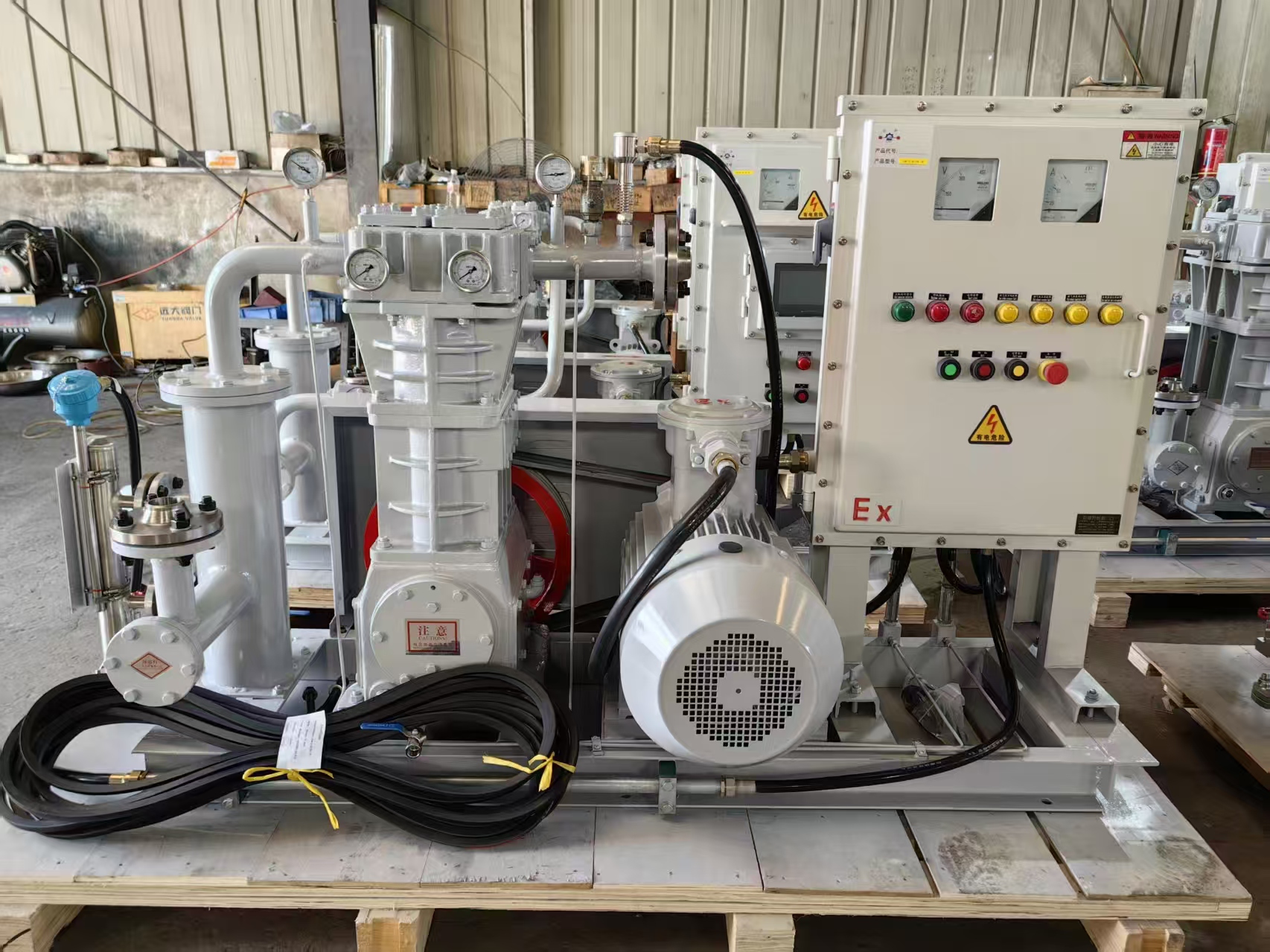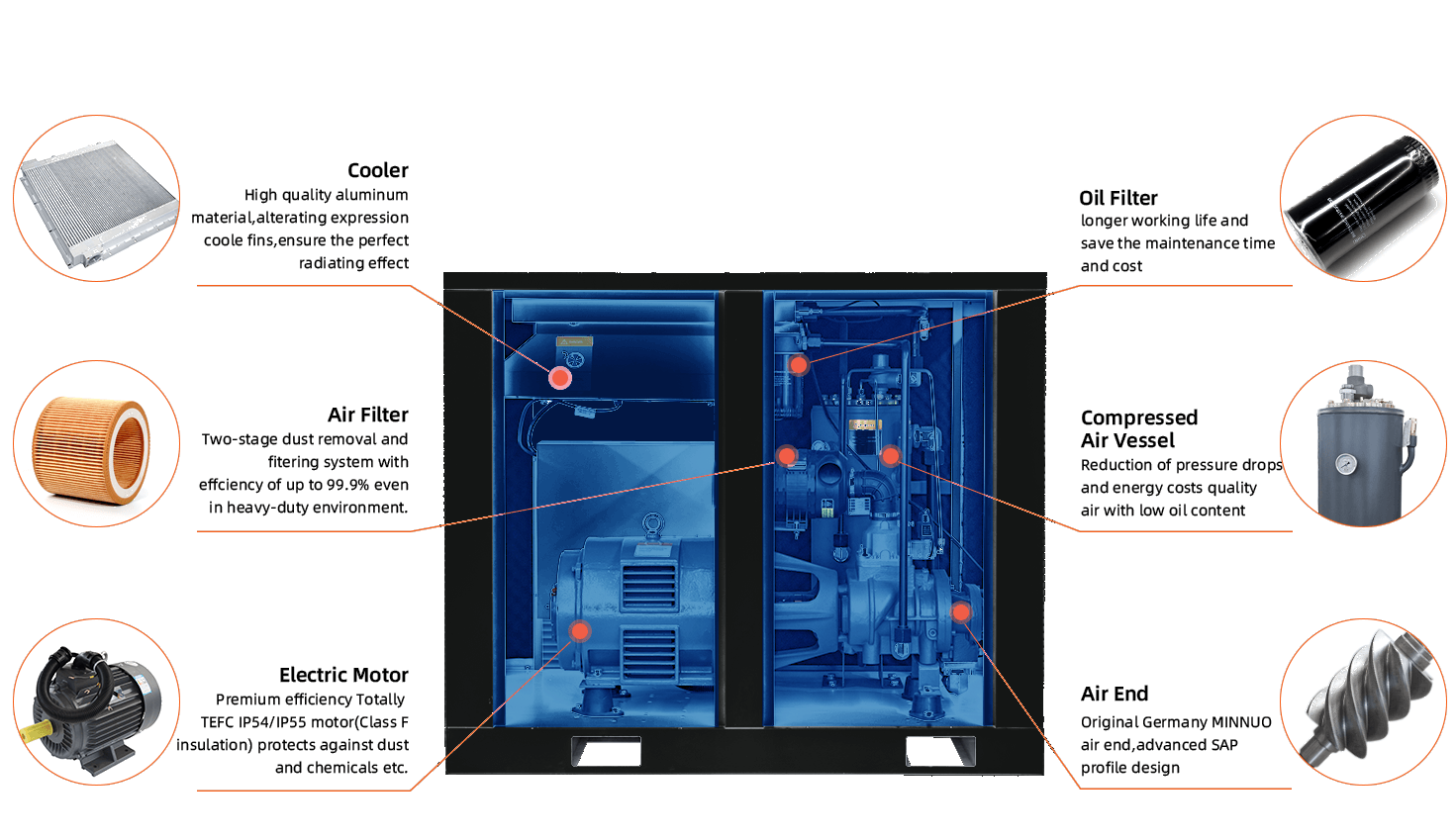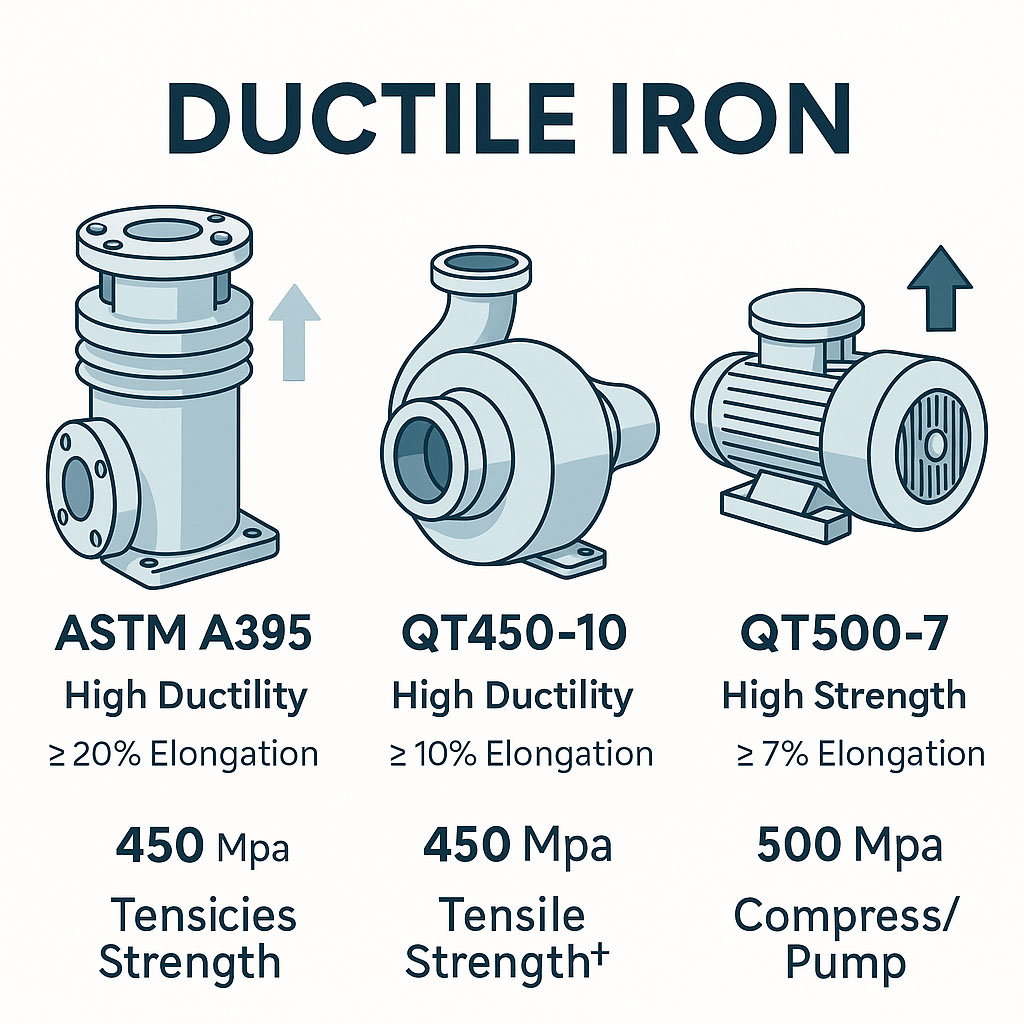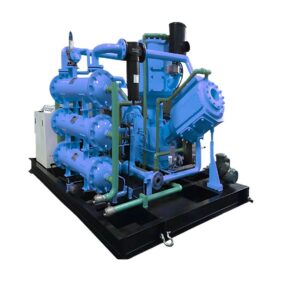Schraubenkompressoren sind das Rückgrat der modernen Industrie, doch alternde Anlagen können an Effizienz und Zuverlässigkeit verlieren und die Betriebskosten erhöhen. Proaktive Nachrüstungen - die Aufrüstung von Technologie und Komponenten - können die Lebensdauer der Maschinen verlängern und die Kosten senken. Unten sind fünf Indikatoren die signalisieren, wann es Zeit für eine Nachrüstung ist.
1. Steigende Energiekosten und abnehmende Effizienz
Ein plötzlicher Anstieg der Stromrechnungen ohne erhöhtes Produktionsvolumen ist oft auf eine ineffiziente Kompressorleistung zurückzuführen. Interner Verschleiß, Luftstrombeschränkungen und veraltete Steuersysteme tragen zu einer nachlassenden Leistung bei . Die Nachrüstung mit moderner Elektronik wie VSDs oder die Optimierung der Kompressorsteuerung kann die Effizienz wiederherstellen und den Energieverbrauch um 20-35% senken.
2. Häufige Ausfälle und ungeplante Wartung
Muss Ihr Schraubenkompressor mehr als nur einmal alle paar Monate gewartet werden? Eine zunehmende Wartungshäufigkeit - wie häufige Ausfälle von Auslassventilen oder der Austausch von Lagern - ist ein klassisches Zeichen für alternde Hardware . Eine Nachrüstung kann den Austausch kritischer Komponenten, die Erneuerung von Steuerungssystemen und die Vermeidung kostspieliger Ausfallzeiten umfassen.
3. Übermäßige Vibrationen, Lärm und Hitze
Ungewöhnliche Vibrationen oder erhöhte Betriebstemperaturen deuten oft auf mechanische Fehlausrichtung, verschlissene Rotoren oder abgenutzte Dichtungen hin. . Diese Symptome verringern die Lebensdauer von Lagern und Dichtungen. Eine Nachrüstung mit Kühler-Upgrades, besserer Ausrichtung oder verbesserter Isolierung kann Wärme und Vibrationen deutlich reduzieren und die Zuverlässigkeit des Systems erhöhen.
4. Veraltete Kontrollsysteme und fehlende Automatisierung
Wenn Ihr Kompressor einen alten analogen Sequenzer verwendet, keinen Fernzugriff hat oder nicht in Ihr SCADA/DCS-System integriert werden kann, ist das ein großes Warnsignal. Nach einem Jahrzehnt ist die Hardware des Steuerungssystems veraltet . Moderne Nachrüstungen ersetzen diese durch intelligente Steuerungen, Echtzeit-Überwachung und Konnektivität, die Lastverfolgung, zustandsabhängige Wartung und vorausschauende Analysen ermöglichen - und so zu erheblichen Energie- und Leistungssteigerungen führen.
5. Ersatzteilknappheit und lange Vorlaufzeiten
Veraltete Kompressormodelle leiden oft unter einer schwindenden Ersatzteilverfügbarkeit und langen Lieferzeiten. Wenn sich Reparaturen aufgrund von Teilemangel in die Länge ziehen, werden Produktionsstopps kostspielig. Zu den Nachrüstungsoptionen gehören die Aktualisierung auf aktuelle, vor Ort austauschbare Module und standardisierte Komponenten, die die Verfügbarkeit von Teilen sicherstellen und den Lagerbestand minimieren.
Zusammenfassende Tabelle
| Indikator | Erläuterung | Nachrüstung im Fokus |
|---|---|---|
| Steigende Energiekosten | Ineffizienter Betrieb erhöht den Stromverbrauch | VSD, intelligente Steuerung |
| Häufige Pannen | Wiederkehrende technische Probleme | Ersetzen von Bauteilen |
| Lärm/Vibrationen/Hitze | Mechanischer Verschleiß und Ausrichtungsprobleme | Aufrüstung von Kühlung und Isolierung |
| Überholte Kontrollen | Mangel an intelligenter Automatisierung | Modernisierung des Kontrollsystems |
| Ersatzteilknappheit | Risiko einer längeren Ausfallzeit | Modulare Komponenten & Beschaffung |
Warum RETROFIT SMARTER IST ALS ERSETZEN
-
Kostengünstig: Nachrüstungen kosten in der Regel 30-60% weniger als der Kauf neuer Geräte und bieten einen schnellen ROI durch Energieeinsparungen
-
Verlängerte Lebenserwartung: Erhöhen Sie die Zuverlässigkeit Ihres Kompressors um 5 bis 10 Jahre mit wichtigen Upgrades.
-
Reduzierte Ausfallzeiten: Moderne Komponenten und Kontrollen bedeuten weniger ungeplante Stopps.
-
Nachhaltiges Wirtschaften: Verbesserte Effizienz reduziert den CO₂-Fußabdruck und steht im Einklang mit den ESG-Zielen.
KEEPWIN-Nachrüstlösungen
KEEPWIN bietet maßgeschneiderte Nachrüstungspakete an:
-
Aufrüstung von VSD-Motorantrieben
-
Intelligente Ablaufsteuerungen, die mit SCADA kompatibel sind
-
Sanierung von Wärmetauschern und Kühlern
-
Dichtungs-, Lager- und Rotor-Rebuild-Kits
-
Add-ons für Fernüberwachung und Telemetrie
Unsere modularen Nachrüstsätze helfen B2B-Kunden, die Lebensdauer zu verlängern, die Energie- und Wartungskosten zu senken und die Systemzuverlässigkeit zu erhöhen - ohne einen vollständigen Austausch des Kompressors.
Anzeichen wie steigende Energierechnungen, häufige Reparaturen, übermäßige Hitze, veraltete Steuerungen und Ersatzteilmangel sind klare Warnsignale dafür, dass Ihr Schraubenkompressor nachgerüstet werden sollte. Wenn Sie diese Probleme proaktiv angehen, können Sie die Effizienz steigern, die Betriebssicherheit erhöhen und Kosten sparen.
👉 Sind Sie bereit, Ihren Schraubenkompressor zu bewerten? Sprechen Sie noch heute mit den KEEPWIN-Ingenieurexperten, um eine kostenlose Nachrüstungsbewertung und einen umsetzbaren Verbesserungsplan zu erhalten.











